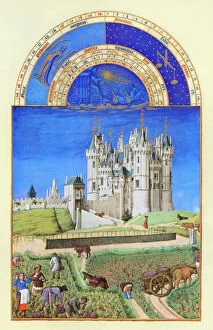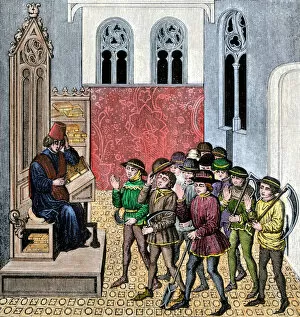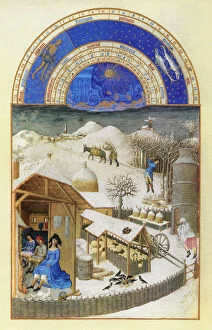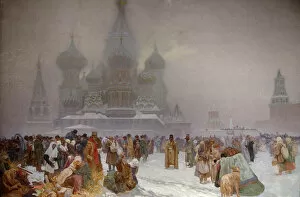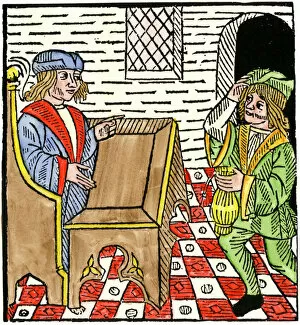Serf Collection
"From Serfs to Emancipation: A Glimpse into the Lives of Medieval Peasants" Step back in time and witness the grape harvest at Chateau de Saumur
All Professionally Made to Order for Quick Shipping
"From Serfs to Emancipation: A Glimpse into the Lives of Medieval Peasants" Step back in time and witness the grape harvest at Chateau de Saumur, where laborers toiled under the watchful eye of their feudal lord. This 15th-century illumination from the Tres Riches Heures of Jean, Duke of Berry, captures a scene steeped in tradition and hard work. As winter's chill settled over the land, peasants sought warmth by a fireside on a farm. The illuminated manuscript reveals their humble existence during February - a reminder that survival often depended on gathering around crackling flames. Rent day was an inevitable part of serfdom in the late Middle Ages. Picture a peasant handing over his hard-earned produce as payment to his lord, highlighting the unequal power dynamics prevalent during this era. March brought new tasks for these laborers; plowing with oxen and pruning vines became essential duties. The manuscript's vivid illustration showcases their dedication to cultivating crops amidst changing seasons - an integral aspect of medieval agriculture. Traveling beyond Europe's borders, we catch glimpses of serf-like conditions elsewhere. Russian women alongside a Finn demonstrate how servitude transcended geographical boundaries while shedding light on different cultural practices. Across continents, British colonial rule left its mark on India. A lavish banquet at Rais i palace symbolizes both opulence and exploitation - reminding us that serfdom extended far beyond medieval times. Yet hope emerged amidst oppression as history witnessed emancipation movements taking root worldwide. In 1861, Russia liberated its serfs from bondage - marking a significant milestone towards freedom for those who had long endured subjugation. Delving deeper into historical dioramas reveals more facets of servitude: slave dances in Suriname depict harrowing scenes from 1830 while Zeezigt plantation offers insight into coffee and cotton production during c1815-21.

